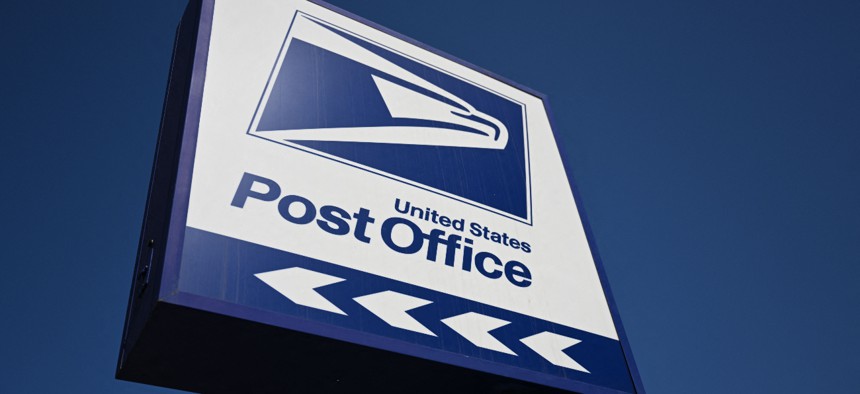
Joe Corbett, the Postal Service’s chief financial officer, said investment restrictions have prevented USPS “from using the inflation protection strategies the private sector might use.” PATRICK T. FALLON/AFP via Getty Images
Why USPS Is Disproportionately Impacted by High Inflation
The Postal Service is expected to pay out $1.1 billion more in cost-of-living adjustments this year.
The U.S. Postal Service is reeling from inflation in ways its private sector competitors can avoid, according to a new report, due to restrictions on its investments, requirements of its labor agreements and limits on its rate increases.
Two-thirds of USPS’ $82 billion in annual expenses goes to labor costs, and nearly three-quarters of its workforce receive cost-of-living adjustments twice per year. The pay bumps are negotiated into the agency’s collective bargaining agreements and separate from the annual wage increases employees receive, which are fixed and not tied to inflation. The adjustment in July 2021 for eligible employees was $1,935, the USPS inspector general found in its recent report, 10 times the increase in July 2020. Joe Corbett, the Postal Service’s chief financial officer, said the COLAs around that time were the largest USPS had ever given out. The Postal Service is expecting COLA costs to go up another $1.1 billion in fiscal 2022.
Non-career employees do not receive the inflation-based adjustments and the IG speculated the relatively flat increase led to the spike in turnover among those employees, which was a whopping 55% last year. Postmaster General Louis DeJoy has prioritized converting the temporary workers to career employees, though that has further exposed the agency to inflationary pressures as those workers will now earn COLAs.
The Postal Service is also particularly exposed to increases in fuel costs, which impacts the agency immediately through its contracted trucking and its own fleet. USPS’ trucking expenses spiked 13% in 2021, the IG found, and Corbett confirmed fuel costs have pushed the agency’s transportation costs to record highs. Unlike some of its private sector competitors, the Postal Service does not purchase fuel for future use to hedge against potential spikes in prices.
While USPS feels the pinch of rising costs in real time, the IG said, its revenue does not increase commensurately through price hikes. Instead, postal management sees the benefits of its higher prices on a delayed basis. Due to its noticing requirements, USPS this year, for example, announced in April its increase that went into effect July based on inflation data from February. It can only use year-over-year data, meaning if rates of inflation pick up, the agency falls behind.
“Because of this dynamic, the Postal Service can incur some of the costs of high inflation before [its price increase] authority adjusts accordingly, and some revenue is forgone due to the delay in price increases,” the IG said.
The Postal Service’s regulator in 2020 gave postal management additional flexibility to raise its raise above inflation, which DeJoy has consistently used and said he will continue to do so. Still, the IG said, the agency is often playing catch up. Corbett said the rate increase process leaves USPS “more vulnerable to inflation than many private sector companies.” The delay impacts regular mail, known as its “market dominant” product, as it can raise rates on its “competitive” products like packages with much fewer restrictions. USPS does not utilize specific inflation price hikes that its competitors adjust on a weekly basis, but the agency does attempt to match its prices to the market.
Despite those challenges, USPS has around $24 billion in cash on hand. However, the Postal Service can only invest that money in Treasury securities with a low rate of return. The agency is currently getting just a $0.082 overnight investment rate. It faces similar restrictions on investments of its funds for retirees benefits. Additionally, the IG noted, USPS’ statutory borrowing limit has remained capped at $15 billion for more than 20 years. The real value of that cap has decreased by 39% since it went into effect in 1999.
Corbett said the investment restrictions have prevented USPS “from using the inflation protection strategies the private sector might use.”
He added inflation has presented “many challenges” to the Postal Service, but pledged to work with stakeholders “to explore solutions to these challenges.”
“Recent surges in inflation have impacted the Postal Service’s costs in unprecedented ways,” Corbett said.







